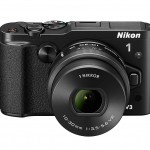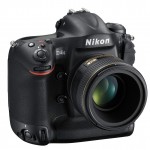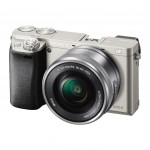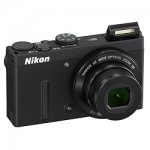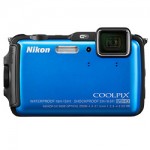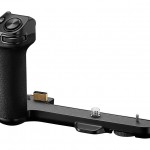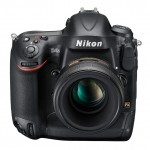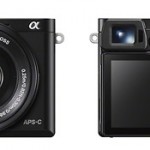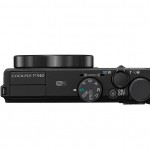Leica Digital-Module-R Reviewby larrylgreenhill
After production delays and financial crises set back delivery dates almost 2 years, Leica finally delivered its Digital-Module-R [camera] in June of 2005. A joint venture between Leica, Kodak, and the Danish firm Imacon A/S, this digital back was designed to convert Leica R8 and R9 35mm film cameras into hybrids that can shoot with either film or a digital sensor. Substituting for the R camera's 35mm film back, the Digital-Module-R (DMR) features a 10-megapixel CCD sensor, a 4x digital zoom to examine the image for sharpness, and a 1.8-inch, 130,338-pixel LCD color monitor. The camera uses SecureDigital (SD) memory cards to store captured images.
Why make a camera back rather than a completely new camera? Research and design resources at Leica had been expended on the development of the R8 35mm SLR. In addition, adding a digital back to an existing film SLR is consistent with the Leica design philosophy, which favors backward compatibility of products, including the full line of Leica R lenses.
Price: $5,999 US
Pros
- Converts the 35mm Leica R8 or 9R into a hybrid SLR that can shoot film or digital
- Allows use of 27 Leica R interchangeable lenses
- 10-megapixel CCD sensor with 1.37 focal length extension factor
- Ease of use with simple, intuitive controls
- Low-noise performance at ISO 100-400 with extension to ISO 1600
- Sharp, contrasty images that require little post processing
- Quick shutter response
- Bright LCD and optical viewfinder
- Rapid downloading of files to computer via Firewire interface
- Fast writing of 19 MB RAW files to SD memory card
Cons
- $5,999 price tag, plus cost of R8 or R9 camera body
- Super-expensive Leica R lenses
- Slow start-up
- 19-MB RAW files require large-capacity SD memory cards
- Small LCD monitor
- Leica R bodies lack autofocus, built-in flash, and TTL flash control
- Low burst rate and small buffer (ten images)
- Adobe Photoshop *.DNG RAW files not compatible with all image browsers
More Leica Digital-Module-R Resources
All Leica Digital-Module-R Photos >>
Owner-posted Digital-Module-R reviews >>
Write a Review >>
Leica Web site >>Introduction
For this review, I took my Leica R8/DMR camera on a Popular Photography Mentor Series workshop in Montana and Yellowstone National Park. I took digital images of landscapes, waterfalls, cowboys, bison, and elk. I shot the same scenes with my Canon EOS 1D Mark II for comparison.Key Features
- 10-Megapixel CCD chip with 26.4 x 17.6-mm active surface, 3872 x 2576 pixels
- Sensor has no low-pass filter
- Imacon firmware for fast image processing
- Bright 1.8-inch LCD
Leica Digital-Module-R Other Features
Immediately impressive is the R8 camera's bright optical viewfinder, which makes manual focusing a pleasure. The R8 camera body provides diopter correction, depth-of-field preview, and mirror lockup, as well as clearly labeled shutter speed and exposure mode choices.The new digital back has a stunningly bright 1.8-inch color monitor. Four buttons-for play, delete, protect, info-sit to the monitor's left, and a large dial for menu navigation, scrolling between images, and zooming in on captured images, sits to the monitor's right. Below that is the DMR's on/off button which also doubles as an enter key.
A black and white LCD data screen sits just beneath the color monitor. It shows the current settings for ISO (100-800, with special flag for ISO push to 1600), compression, file format, white balance, moiré filter status, the number of images remaining, and the battery level. To the left of the data panel is a dial that controls file format (JPEG, TIFF, RAW), ISO sensitivity, white balance, exposure compensation, user profiles, and the self-timer function. A button at the center of the setting dial selects the function. Along the right of the data panels sits a small speaker, a button to backlight the data panel, an LED to signal when the SD card is being written to, and a contact strip for connection to the power supply.
Captured DMR images can be examined on the LCD at four levels of magnification and with or without a histogram for exposure evaluation. Even in the bright Yellowstone sunlight the bright LCD was easy to use. The histogram can be toggled between a summary level curve and a tricolor graphic, complete with visual or auditory signals for clipping, and is calculated on the just section of the image shown on the LCD, no matter what the magnification.
Leica Digital-Module-R Design
The Leica Digital-Module-R is constructed of lightweight magnesium that also serves as a heat sink for the CCD sensor. It is shipped in two separate, interlocking components: the digital back and the power unit. Installation involves detaching the R8's film back with a plastic tool, latching the digital back onto the R8 camera, installing a new focusing screen, and securing the power module to the camera bottom.Camera Performance
I loved the DMR's ergonomics, ease of use, high resolution and its contrasty, color saturated images. Shooting was quick and natural with no appreciable shutter-lag. I was able to turn on the camera while raising it to my eye and get most shots.Continuous shooting was possible, but the two-frames-per-second capture rate is slower than most dSLRs. While the Leica R8/Digital-Module-R is not an action-oriented digital camera setup, one can capture horses galloping with planning and practice. To get action shots, I set the DMR's ISO to 800, set the lens aperture at f/2.8, and used the Leica 70-180mm zoom's shortest focal length.
The DMR's swing-open back makes it especially easy to keep the DMR's sensor dust-free. To clean the sensor, just open the R8's back and use a hand-held squeeze bulb to blow the dust away.
The R8/DMR's wide (ISO 100 to 1600) sensitivity range proved useful in shooting varied lighting situations. The bright, sharp, split-image and surrounding prism grid in the viewfinder proved helpful when focusing manually. I came to prefer it to Canon's auto focus for most static situations. The DMR kit replaces the R8's focusing screen with a universal screen that features a dark frame corresponding to the slightly smaller format of the digital sensor. The larger viewfinder allowed me to visualize around digital capture area, taking in the larger scene for better composition and shot planning.
Because Leica's interchangeable SLR lenses are sharp as a tack, they reveal any camera shake or inaccurate focusing. The R8/DMR should be manually focused with considerable care. The sharpest images can be obtained only using a tripod, unless one shoots at a high shutter speed, which might require a high ISO setting potentially introducing digital noise.
My Canon EOS 1D Mark II provided a different photographic experience. While the viewfinder was not as bright and the controls not as intuitive, the Canon's automated focusing and image stabilized lenses proved to have a substantial advantage for action shots and model shoots at Nevada City, a ghost town museum in Montana.
Not Everything Was Smooth Sailing
The first challenge with the DMR is plowing through the dense but confusing English in the user's manual. The camera handles well as long as you have read the manual first, and as long as the buffer is not full. Practiced once, the DMR's controls can be used easily and settings made intuitively. However, I had a devil of a time finding the location of the vital "enter key" button to open submenus and select menu options. Finally, I found a reference in the manual to the camera's on-off button. Hold it down briefly and it makes the selection. Hold it down for more than 5 seconds and it shuts off the camera.I soon found that the Adobe DNG RAW files generated by the DMR were not compatible with several of my non-Adobe photo browsers or my Epson 2000 multimedia viewer.
Battery life was shorter than I expected. The DMR's rechargeable 7.4 V, 1800 mAh lithium battery does not hold a charge as long as the Canon EOS 1D Mark II's 12 V, 2200 mAh Ni-MH battery. The Leica battery was drained after taking only 68 images on the first day in Yellowstone Park, while the Canon did not have to be recharged during the 4-day workshop. When the indicator showed less than half a charge was left, the DMR's LCD display started malfunctioning until I cycled it off and on again. While a spare DMR battery will set you back $200, it is worth the expense.
I had to fuss a bit, with calls to Leica in New Jersey and e-mails to Leica in Germany, to get my DMR's Firewire port to connect to my computer for image download or remote camera control. Leica supplies the cable and a spare adapter to fit either a 4-pin or 6-pin Firewire port on the computer. This setup did not work on my IBM X30 laptop, but worked fine on my new Gateway desktop.
Controlling the DMR from a tethered computer also took some experimentation. Leica and Imacon have an agreement that allows DMR owners to download Imacon Flexicolor 4.0 software for computer control of the DMR. But getting software support was not easy. When the Flexicolor 4.0 failed to work on my laptop, Imacon A/S technical representatives initially refused support. Only after Leica in New Jersey referred me back to Imacon was I sent a CD ROM support disk that made it possible to view live digital images from the DMR on my desktop computer's screen, a function not available when the DMR is run by itself.
Although Leica provides a non-transferable, 2-year warranty for the DMR, it does not offer the "Passport" level warranty that replaces the equipment if it breaks.
Image Quality
All photographs were taken in aperture-priority mode and stored in the DNG RAW format. The exposure-compensation dial was adjusted so that the histogram curve on the DMR's LCD just missed touching the right edge of the scale.Landscape shots taken at ISO 100 were sharp, colorful, had high contrast and gave a sense of depth, as seen in Lower Falls of the Grand Canyon of Yellowstone photo (see below). Strong contrasts are shown between the reflection of the sky and the white clay at West Thumb Geyser Basin (see below). The Leica 19mm f/2.8 ultra-wide lens captured the color, sky, and huge expanse of multicolored hillside in the picture of Cleopatra's Terrace (see below). Note the contrast of sky, clouds, and brilliant multicolored travertine hill at Palette Springs (see below). The Leica 19mm ultra-wide lens captured the Montana "big sky" (see below) when I posed several people against the panorama of mountain and sky.
Click on thumbnails to view sample photos.
Click on thumbnails to view sample photos. The digital sensor's 1.37x digital crop factor gave my Leica 180mm telephoto lens an effective focal length of 247mm. That helped me capture frame-filling photos of bison and bull elk grazing in Yellowstone National Park. Not only does the digital crop factor offer more reach, but it does it with lighter lenses. This makes it easier to get good handheld telephoto images. Note the sharpness of the grazing bison image (see below), which was shot without a tripod.
Digital-Module-R RAW files open up in Photoshop CS2 with great sharpness, and requiring little post-processing. This is a welcome change from the lower-contrast images generated by the Canon EOS 1D Mark II. The DMR sensor also yields good shadow detail, color balance, and sense of depth - see the Mammoth Springs landscape photo. Resolution is excellent - enlarging the photo six fold (See Mammoth Hot Springs detail, below) reveals the words "General Store" on a sign in front of one of the buildings in the small village in the hills.
Click on thumbnails to view sample photos. Conclusion
The Leica Digital-Module R produces RAW images that are sharp, colorful, have good dynamic range, and require little post processing. The back is robustly made and well engineered. Attaching a DMR to the Leica R film camera yields a new camera that appears to have been engineered as a single DSLR from the start. It is easy to learn to use, and the resolution at low ISO settings was better than my Canon EOS 1D Mark II. The Leica Digital-Module-R handles landscape and nature photography well.While the DMR's images are outstanding, several limitations must be kept in mind. The Leica R8/DMR design falls short of my Canon EOS 1D Mark II because of its higher price, slower burst rate (2 frames-per-second), smaller buffer size (10 images), lack of built-in flash, no auto focus or image stabilized lenses, no TTL flash metering, and shorter battery life.
Who Should Buy The Leica Digital-Module-R
The Leica DMR will appeal to well-heeled amateur photographers, serious camera collectors, and professionals who already own a collection of Leica R lenses. Combined with an R8 or R9 camera and the Leica R lenses, the DMR will do its best work in the studio, at weddings, fashion shoots, for photojournalism, as well as for landscape and macro work. Sports and wildlife photography will be more difficult because of its slow burst rate and lack of auto focus.-end-
Leica Digital-Module-R Box Contents
- Leica Digital-Module-R Camera
- Power unit for winding the shutter and for energy supply
- Universal focusing screen
- Tool for removing the standard camera back
- Lithium-ion battery and charger
- Car charger cable
- 256 MB SanDisc Ultra II SD Card
- Leica Digital-Module-R Ccse
- FireWire cable with adapter (4 poles or 6 poles)
- Adobe Photoshop Elements 3 (Mac/Win)
Other Resources:
Leica Digital-Module-R User Reviews >>
Write a Leica Digital-Module-R Review >>
Leica Digital-Module-R Sample Gallery >>
Leica Web site >>



 LinkBack URL
LinkBack URL About LinkBacks
About LinkBacks













 Reply With Quote
Reply With Quote
